Golden Grove, the former seat of the Campbell family, the Earl’s of Cawdor, is a small settlement which lies in a picturesque agricultural area in the Towy Valley, north of Carmarthen. The Parish is served by the Church of Llanfihangel Aberbythych, which is dedicated to St. Michael. Inside the Church is a wooden Altar Cross, which was donated to the Church as a war memorial for its four former Parishioners who fell during the Great War. There is also an individual war memorial to Bertie Lewis, of Iron Gate, who was killed in WW2, but I do not presently know if there are any other WW2 memorials in the Church. As a result, I have decided to add below the details of all former sons of the Parish who fell during both World Wars.
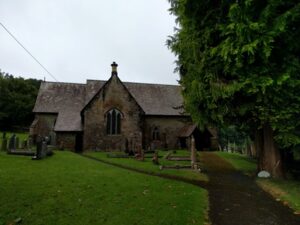
The Great War, 1914-1918
The Honorable Eric Octavius Campbell, DSO & Bar, Lieutenant-Colonel, Seaforth Highlanders. Eric was born on 3 December 1885, the youngest son of Frederick Archibald Vaughan Campbell, 3rd Earl Cawdor and Edith Georgina Campbell, Countess Cawdor, of Golden Grove, Stackpole Elidor and Cawdor Castle, Nairnshire. He was baptised at Llanfihangel Aberbythych Church on 24 January 1886. Eric was educated at Eton and passed into the Army through the Militia, being gazetted as Second Lieutenant into the Seaforth Highlanders on 20 December 1905. At the outbreak of the war he mobilised as adjutant of the 2nd Battalion, Seaforth Highlanders and embarked for France aboard the SS Lake Michigan at Southampton on 22 August, entraining at Boulogne for Le Cateau, to join the BEF. Eric then fought with the battalion during the withdrawal south to the Marne, taking part in the Battle of the Marne in September 1914, and in the ensuing Battle of the Aisne, when the Germans withdrew to Chivy Ridge. The BEF then moved north to Flanders, and the 2nd Seaforth’s took part in the Battle of Messines in October 1914. Eric was awarded the DSO on 18 February 1915, and was wounded at St. Julien on 25 April 1915. He was employed as brigade major from 3 January 1915 to 24 September 1916, his services being rewarded with a brevet majority on 3 June 1916. He was in hospital In France towards the end of 1918, and on return to duty in November went to the second battalion, but resumed the appointment of brigade major to 44 Infantry Brigade on 22 January 1917. Eric returned to regimental duty on 27 May 1917, and for a short time commanded the Second battalion. On 20 October 1917, he was given command of another battalion of the Seaforth Highlanders, which he retained till the middle of May, 1918, when a breakdown in health, due to nearly four years active service, compelled him to go to hospital. He arrived home on 25 May, having been repeated wounded, but returned to duty immediately, as he was only bruised by a fragment of a shell. In the Gazette of 24 May 1918 he was mentioned in dispatches for the third time, and a bar to his DSO was awarded in the Gazette of 3 June 1918. Sadly Eric died of cerebral haemorrhage on 4 June 1918 in Hospital in London. The remains of the 33-year-old were conveyed back home to west Wales and on 7 June he was buried in the Cawdor Plot at Stackpole Elidor Churchyard, Pembrokeshire.
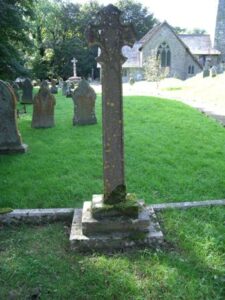
Alcwyn Christmas Evans, Private, 320495, Welsh Regiment. Alcwyn was born in 1894, the son of David Evans and Harriet Evans, of Caefadog, Llanarthney. He was baptised at Llanfihangel Aberbythych Church on 22 April 1894. Alcwyn was a member of the Golden Grove Church Choir, and worked as a woodsman prior to leaving home to enlist into the Pembroke Yeomanry. During March 1916 the 1/1st Pembroke Yeomanry moved to Egypt, where it merged with the Welsh Border Mounted Brigade and formed the 4th Dismounted Brigade. On 2 February 1917 it merged with the 1/1st Glamorgan Yeomanry to form the 24th Battalion, Welsh Regiment, and became attached to 231 Brigade, 74th (Yeomanry) Division. The Division assembled in Egypt as part of the EEF, before crossing the Suez Canal into the Sinai, and saw its first major action during the Second Battle of Gaza from 17 April 1917. Alcwyn survived the battle, but soon afterwards took ill and was hospitalised at Kantara. He died of enteric fever there on 12 May 1917. The 23-year-old was buried in Kantara War Memorial Cemetery, Egypt. His brother Evan died just three months later.

Evan Evans, Lance Corporal, 25833, Lancashire Fusiliers. Evan was born in 1889, the son of David Evans and Harriet Evans, of Caefadog, Llanarthney. He was baptised at Llanfihangel Aberbythych Church on 4 Aug 1889. Evan worked as a carpenter and wheelwright prior to moving to Pembrey to work at the Nobel Munitions Works soon after the outbreak of war. Evan then left his position to enlist into the Royal Field Artillery at Llanelli, however with the heavy losses being suffered at the front, was drafted to France and transferred to the 11th Battalion, Lancashire Fusiliers. The battalion was attached to 74 Brigade, 25th Division and had landed in France on 26 September 1915, seeing its first action when it defended Vimy Ridge against a German attack in May 1916. The division then moved to the Somme, to the Warloy area and attacked on 3 July 1916 near Thiepval. The division fought throughout the Battle of the Somme, and then moved to Flanders, taking up positions at Ploegsteert, where it held the line for the months leading up the Battle of Messines, taking part in the great attack which followed the blowing of 19 huge underground mines on 7 June 1917, taking large numbers of prisoners and machine-guns as prizes. The battalion then enjoyed a rest period behind the lines before moving back to the front, taking up positions on Westhoek Ridge just after the launching of the Passchendaele Offensive and remained in position until 10 August 1917, when at 04.35 the men arose from their trenches to attack the German lines. Evan was killed in action during the attack that day, possibly when some of the leading parties of men were hit by machine-gun fire from a German position at Sexton House. The 28-year-old has no known grave and is commemorated on the Ypres (Menin Gate) Memorial, Belgium. Evan’s death was a tremendous blow to his family, as his brother Alcwyn had died just three months previously.
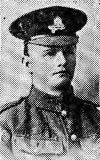
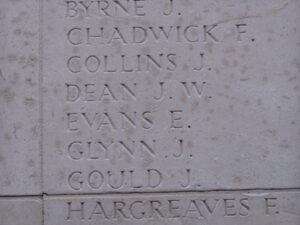
Richard Henry Grover, Driver, 136006, Royal Field Artillery. Richard was born at Bethnel Green in 1894, the son of Richard and Elizabeth Grover. By 1911 he had moved to Golden Grove, and worked as a farm labourer for James and Maria Roberts at Bryngwynuchaf. He married Margaret Evans, of Glanybad, Golden Grove, in 1916, but by now had enlisted at Ammanford into the Royal Field Artillery. Richard was drafted to France to join the 87th Battery, 2nd Brigade, which was attached to the 2nd Division. The division had been in France since the start of the war, and had fought at during the withdrawal to the Marne, and at First Ypres and Loos. In 1916 it had taken part in the Somme battles, before moving to Arras where it saw further heavy fighting in the Spring of 1917. Later that year the division moved to positions near Villers-Plouich and took part in the Battle of Cambrai. Richard was killed by German counter-battery artillery fire whilst his battery was in position at Marcoing on 22 November 1917. The 24-year-old has no known grave, so is commemorated on the Cambrai Memorial, Louverval, France. His widow remarried to Arthur Evans after the war, and moved to Fron Deg, Waterloo Road, Penygroes. Richard is not commemorated on the Golden Grove Memorial.
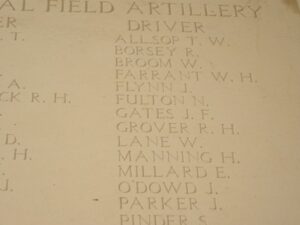
John Jones, Sergeant, 686, Princess Patricia’s Canadian Light Infantry. John was born on 23 March 1890, the son of Benjamin Jones and Ann Jones, of Pantllyn, Golden Grove. He was baptised at Llanfihangel Aberbythych Church on 24 March 1892. He trained as a carpenter prior to leaving home to enlist into the Middlesex Regiment as a young man, but then emigrated to Canada with his sister Hannah and her husband, John James. He became one of the first to enlist, when he attested at Ottawa on 20 August 1914, into the Princess Patricia’s Canadian Light Infantry. The PPCLI sailed from Quebec on 27 September 1914, and after a few days in England moved to France on 21 October. The PPCLI moved to trenches near Ypres, at Dickebusch, attached to the 27th Division, and fought at St. Eloi and Second Ypres. John suffered wounds to the head at Ypres in April 1915 and was treated at the 81st Field Ambulance at Poperinghe before being evacuated to No. 8 General Hospital at Wimereux. He received further treatment at No. 5 General Hospital, Boulogne, before returning to duty at the end of May 1915. In December 1915 the PPCLI joined the newly formed 7th Canadian Brigade, 3rd Canadian Division and fought with the Division during the terrible fighting for Mount Sorrel in June 1916. John was promoted to Sergeant on 21 July 1916, before the 3rd Canadian Division moved to the Somme, taking part in the bloody Battles of Flers, Thiepval and Le Transloy. He was wounded again in the head on the Somme on 9 October, but this time more severely, with further wounds to his back, and was evacuated again to No. 8 Stationary Hospital at Wimereux, where he died of his wounds on 13 October 1916, aged 23. He is buried in Wimereux Communal Cemetery, France. John is not commemorated on the Golden Grove Memorial, possibly as by then his parents had moved to Bwlche Farm, Carmel and no family was left in the community.
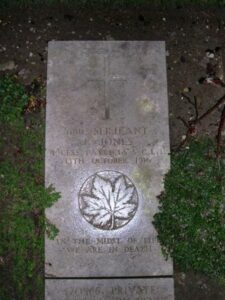
Ronald Grove Jones, Private, 8524, Leicestershire Regiment. Ronald was born at Golden Grove in 1890, the son of John Jones and Sarah Jones, of The Station House, Golden Grove. He was baptised at Llanfihangel Aberbythych Church on 27 May 1890. His father was Station Master at Golden grove for several years before moving the family to 109, Lark Hall Lane, Clapham at the turn of the century. Ronald enlisted at Clapham into the Middlesex Regiment on 28 March 1908, but then transferred to the 2nd Battalion, Leicestershire Regiment. He was stationed with the battalion in India at the outbreak of war, where it was attached to the Garwhal Brigade, 7th (Meerut) Division, and the division was recalled to France to reinforce the stretched BEF. The division took up positions in Northern France, where they saw heavy action the following year, during the Battle of Festubert. Ronald was killed here on 15 May 1915, aged 25. He has no known grave, and is commemorated on the Le Touret Memorial, Richebourg L’Avoue, France. His brother, Thomas Penry Jones, died whilst serving with the Machine Gun Corps in 1917. Ronald is not commemorated on the Golden Grove War Memorial.
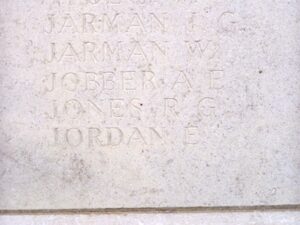
Thomas Penry Jones, Private, 83826, Machine Gun Corps. Thomas was born in 1889, the son of John Jones and Sarah Jones, of The Station House, Golden Grove. He was baptised at Llanfihangel Aberbythych Church on 3 February 1889. The family had moved to 109, Larkhall Lane, Clapham, London prior to 1911, and Thomas enlisted at Wandsworth into the East Surrey Regiment on 27 January 1916. On 30 January 1917 he was transferred to the 272nd Company, Machine Gun Corps, which was attached to XIX Corps. The Corps fought in the Mesopotamian Campaign. On 4 December 1917, Thomas was found dead, with his throat cut, at Magil Camp. A subsequent court of enquiry discounted reports of him being murdered by Arab horse thieves, and gave a verdict of suicide. Thomas was 28 years old, and is buried at Basra War Cemetery, Iraq. His brother, Ronald Grove Jones, had been killed in France in 1915. Thomas is not commemorated on the Golden Grove War Memorial.
Thomas Rees, Private, 44253, South Wales Borderers. Thomas was born in 1886, the son of John Rees and Elizabeth Rees, of the Three Compasses, Golden Grove. Thomas resided with his wife, Mary Ann, at 6, Cromwell Street, Swansea prior to the war. He enlisted at Chatham into the Royal Engineers, but was later transferred to the 2nd Battalion, South Wales Borderers. The battalion had been in China at the outbreak of war, and took part fighting there against the German Garrison at Tientsin. It was then recalled to Britain, where it joined 87 Brigade, 29th Division, and took part in the Gallipoli Landings, gaining a reputation for its fighting ability. The Division moved to France during May 1915 and took part in its first major action in France during the 1916 Somme Offensive. It then fought at the Battles of Albert and Le Transloy, suffering heavy casualties. In the Spring of 1917 the Division fought at the Battle of the Scarpe, which was part of the Arras Offensive, seeing heavy fighting around Monchy-le-Preux, and then moved further north to Ypres, initially to hold the line whilst other units had been withdrawn for specialist training, in readiness for the Third Battle of Ypres, which opened on 31 July 1917. The 29th Division went into reserve whilst the first attacks, the Battle of Pilckem Ridge, took place, then on the night of 14-15 August the 2nd SWB moved into the line facing Langemarck, ready to launch another offensive. On the following day the battalion reconnoitred the ground in front of them, and laid white tapes in No Man’s Land, to guide the attacking troops, and at dawn on 16 August 1917 the 2nd SWB launched an attack on Langemarck. The battalion successfully took its two objectives, but had suffered 163 casualties. Amongst those was Thomas, who had been killed during the fighting on 16 August 1917. The 31-year-old has no known grave, and is commemorated on the Tyne Cot Memorial, Belgium. Thomas is not commemorated on the Golden Grove War Memorial.
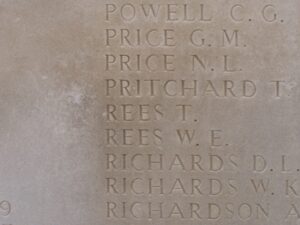
Abel Thomas, Private, 191884, Labour Corps. Abel was born in 1894, the son of John Thomas and Mary Thomas, of Blaenycwm, Golden Grove. By 1911 he was residing at 7, Tynewydd Cottage, Cross Hands, where he worked as a collier. Abel enlisted into the 9th Battalion, Royal Welsh Fusiliers at Tumble soon after the outbreak of war. The battalion had formed at Wrexham in September 1914, before moving to Tidworth to join 58 Brigade, 19th (Western) Division. On 19 July 1915 he landed in France with the battalion, and the entire 19th Division then moved to the Nursery Sector at Calonne for trench initiation alongside the Dehra Dun Brigade. The infantry battalions of the division then began carrying out the usual routines of rotating in the trenches: four days in the front line; four in support; and four in reserve, interspersed with training regimes and carrying out working parties and trench raids. Just south, the British launched a great offensive around the town of Loos on 25 September 1915, and the 19th Division was ordered to attack from its positions at the same time, to attempt to draw enemy attention away from the main battle area, however the assault was a disaster, and heavy casualties were suffered by the 19th Division for no gain. Abel survived the attack and married Sarah Ann Davies of Ty Eyle, Skewen Road, Neath, whilst home on leave in 1916. While the 9th RWF continued to take part in further major actions for the duration of the war, Abel was at some time invalided home and attached to the 421st Agricultural Company, Labour Corps. He died in Carmarthen Hospital on 2 April 1918, aged 23, and is buried in Carmel Baptist Chapelyard and Extension. Abel does not appear to be commemorated locally.
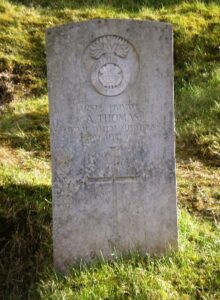
David Clement Thomas, Sapper, 66100, Royal Engineers. David was born on 23 July 1887, the son of Ebenezer Thomas and Hannah Thomas (nee Clement), of Golden Grove. Soon afterwards the family moved to 77, Dillwyn Street, Llanelli. David worked in Llanelli as a Sorting Clerk and Telegraphist for the Post Office prior to enlisting into the Welsh Field Company, Royal Engineers, a Territorial Army unit on 2 January 1915. David then served at Gallipoli and in the Middle East with the Welsh Field Company, Royal Engineers. He remained in the Royal Engineers for several months after the armistice, being was posted to ‘L’ Signal Battalion, Royal Engineers. He was demobilised in the summer of 1919, and was on holiday in Pembrokeshire when he was killed in a cycling accident near Llanstinian Lodge, Letterston on 13 September 1919, his body being found in a brook near the road. David was 32 years old, and his remains were brought home for burial in Llanelli (Box) Cemetery, in the old section. He is not commemorated at Golden Grove.
David Williams, Sapper, 223814, Royal Engineers. David was born in 1875, the son of John Williams and Hannah Williams, of Cwmgelynew, Golden Grove. He was baptised at Llanfihangel Aberbythych Church on 28 November 1875. David worked as a stonemason prior to enlisting into the Royal Engineers on 10 January 1917. David was posted to the 2/1st Highland Field Company, Royal Engineers, but was soon to become ill and was discharged from the army as medically unfit on 16 April 1917 after having been diagnosed as suffering from tuberculosis. He died of tuberculosis at Golden Grove on 29 September 1919, aged 44. He is not commemorated by the CWGC, and there is no evidence to link his illness or death to his short time in the colours. His brother, John Williams, also died during the war.
John Williams, Private, 74846, Royal Welsh Fusiliers. John was born in 1879, the son of John Williams and Hannah Williams, of Cwmgelynew, Golden Grove. He was baptised at Llanfihangel Aberbythych Church on 22 April 1879. John married Lily Beatrice Poulton in 1904 and the couple resided at 7, Commercial Street, Pontnewydd, where they ran their own hardware store. John had served with the Military Foot Police before being transferred into the 9th Battalion, Royal Welsh Fusiliers late in 1917. The battalion was in France attached to 58 Brigade, 19th (Western) Division. The Division had fought gallantly at Loos, the Somme and at Third Ypres. In 1918 they were caught up in the German Spring Offensive near St. Quentin, where they suffered terrible casualties, during the Battle of Bapaume, where they were driven back by a stronger German force. The decimated division moved to Ypres to rebuild, but were caught up in the German attack at Messines in April. John was wounded during the German Spring offensives early in 1918 and was hospitalised, before being evacuated to Britain, being sent to Stobhill Hospital, Springburn, Glasgow, Scotland for further treatment. He died of his wounds there on 23 May 1918. The remains of the 39-year-old were conveyed back to Pontnewydd and he was buried in Pontnewydd (Holy Trinity) Churchyard four days later. His brother, David Williams, also died during the war. John is not commemorated at Golden Grove.
John Henry Williams, Private, M/287507, Royal Army Service Corps. John was born in 1892, the son of John and Sarah Williams, of Tynewydd, Carmel. He worked as a carpenter and joiner prior to enlisting into the Army Service Corps on 5 February 1917 as a Driver, and was posted to Grove Park, Middlesex. John had only been in the army for five weeks when he took ill, and died of pneumonia at the Military Hospital at Hounslow, Middlesex on 9 March 1917, aged 24. He was brought home and buried with full military honours in Carmel Baptist Chapelyard & Extension. His younger brother Idwal was taken prisoner by the Germans in April 1918, but survived the war. John is not commemorated at Golden Grove.

World War Two, 1939-1945
John Ronald Campbell, Major, 33632, Coldstream Guards. John was born on 18 September 1905, the son of Brigadier General John Vaughan Campbell, VC, CMG, DSO, and of Amy Dorothy Campbell (nee Penn). His father was the son of the 2nd Earl Cawdor, of Stackpole and Golden Grove. John married the widow Ethel Mildred Bibby (nee Cook), at All Saints’ Church, Trefonen on 12 June 1935 and the couple settled at Hadnall, Shropshire. John served as a regular Officer with the 1st Battalion, Coldstream Guards, following the family tradition, as it was the Regiment that his father won the Victoria Cross with during the Great War. (See Carmarthenshire Heroes page). After the German invasion of Poland, the British Government sent an expeditionary force to France, and with it was the 1st Battalion, Coldstream Guards, which was attached to the 3rd Division, under Major General Bernard Montgomery. The battalion landed at Cherbourg on 30 September 1939, before moving to Roubaix which was reached on 12 October. The BEF was sent to Northern France to defend a sector which was unprotected by the Maginot Line, and began to construct a twenty-mile defensive line from Halluin (near Menin) to Maulde, south of Tournai. On 10 May 1940, following a period known as the Phoney Wat, the Germans invaded the low countries, advancing into Belgium and Holland. On 14 May the Coldstreamers engaged the Germans for the first time, repulsing a German river crossing. Unfortunately the Maginot Line was soon breached and to prevent being cut-off, the 3rd Division began to withdraw, together with the remainder of the BEF. On 16 May the 1st Battalion withdrew to the Escaut, then on 22 May moved again to Wattrelos, east of Roubaix. Within little over a weeks time, John was dead. He had been killed in action on 30 May 1940 during heavy fighting. The 35-year-old was buried in Veurne Communal Cemetery Extension, Belgium.
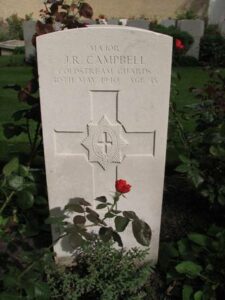
William John Goodfellow, Sergeant (Observer), 653294, Royal Air Force. William was born in 1911, the son of William Thomas Goodfellow and Elizabeth Goodfellow (nee Roberts), of Brynyrawel. He enlisted into the Royal Air Force soon after the outbreak of war and after completing his training as an Observer was posted to 150 Squadron, Royal Air Force, which was based at RAF Kirmington, equipped with the Vickers Wellington III. On 28 October 1942 William took off from Kirmington aboard Wellington BK310, which had been despatched to carry out a mine-laying operation, which was known in the RAF as ‘Gardening’. The Wellington crashed into high ground in the Quantocks, Somerset, on the return journey the following morning of 29 October, injuring three crew-members and killing William. He was 31 years old and is buried in Carmel Baptist Chapelyard and Extension. The photograph is courtesy of Bev Lewis.
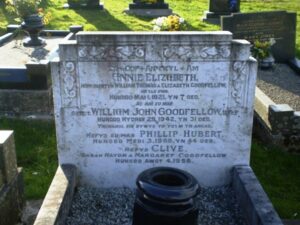
William Eleazor Jones, Private, 4198119, South Wales Borderers. William was born on 8 April 1918, the son of Morgan John Jones and Mary Dorothy Jones, of Pwllacca, Golden Grove, Carmarthenshire. He was baptised at Llanfihangel Aberbythych Church on 12 July 1918. He worked as a labourer in a local quarry prior to enlisting into the army and was posted to the 6th Battalion, South Wales Borderers. The battalion was raised in Glanusk Park in July 1940 and trained as an infantry regiment until April 1942, when it became a tank unit, the 158th Regiment Royal Armoured Corps. The battalion sailed for Bombay in October 1942, then in March 1943 it was reconverted to infantry and trained as an amphibious assault unit. The battalion then moved to Calcutta to attack Akyab, but this move was cancelled and the battalion was sent to Burma to fight in the Arakan. Once the battalion had moved into position it launched an assault on the Mayu Tunnels, two strategically important tunnels which carried the road and railway through the Mayu hills, taking part in ferocious hand to hand fighting over the course of two days, capturing both tunnels. William was killed in action during the heavy fighting for the tunnels, on 26 March 1944. The 25-year-old was originally buried in Akyab War Cemetery, together with his fellow comrades killed during the ferocious fight, but in May 1952 their graves were exhumed and re-interred into Taukkyan War Cemetery, Myanmar.

Bertie Lewis, Private, 10699128, Royal Army Ordnance Corps. Bertie was born in 1905, the son of John Thomas Lewis and Jemima Lewis (nee Davies), of Iron Gate, Golden Grove. He was baptised at Llanfihangel Aberbythych Church on 10 September 1905. Bertie worked as a Law Clerk prior to the war and had qualified as an accountant before joining the Royal Army Ordnance Corps, and was posted to North Africa. Bertie sadly died in Algeria while on active service, the official cause of death being sleeping sickness. The 37-year-old was buried in El Alia Cemetery, Algeria. Bertie is commemorated on an individual plaque within St. Michael’s Church.
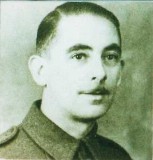
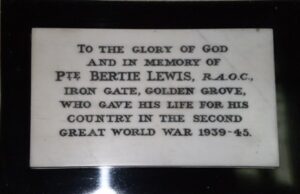
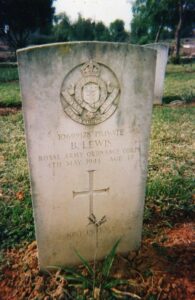
Thomas Randall Lewis, Private, 14208080, The Buffs (Royal East Kent Regiment). Thomas was born on 13 February 1921, the son of Rees Lewis and Elizabeth Lewis (nee Davies), of 4, John’s Terrace, Carmel. He worked as a coalminer’s assistant prior to enlisting into the army and was posted to the 5th Battalion, The Buffs (Royal East Kent Regiment). The battalion saw service in France 1940 with 36th Infantry Brigade, 12th (Eastern) Division, and was evacuated from Dunkirk. During 1942 the 36th Brigade was attached to the 78th Division and took part in Operation Torch, the Allied landings in North Africa. The division then fought in North Africa with the 1st Army. Thomas was killed during the final stages of the Tunisian campaign on 24 April 1943. He was 22 years old and is buried in Medjez-El-Bab War Cemetery, Tunisia.
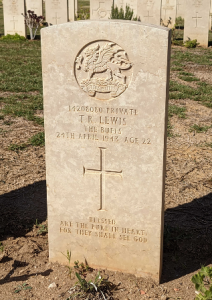
Thomas Ivor Morris, Driver, T/50693, Royal Army Service Corps. Thomas was born in Haverfordwest in 1905, the son of Thomas Morris and Anna Morris (nee Llewellyn). By 1921 the family had moved to Rhandir, Golden Grove, and Thomas’s father worked as a timer engineman. Thomas himself had trained as a motor mechanic and worked at the Castle Garage and Engineering Company at Ammanford. He married Mary Roberts in 1938 and the couple settled in Swansea. Thomas enlisted into the Royal Army Service Corps soon after the outbreak of war and was posted to the 2nd Ammunition Column, Royal Army Service Corps. Thomas was possibly in France with the BEF in 1939, however he died at Aldershot on 15 January 1940. The remains of the 33-year-old were brought home and he was buried in Carmel Baptist Chapelyard and Extension.
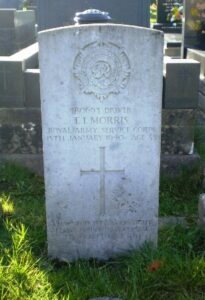
David Owen Perkins, Petty Officer Stoker, D/KX 81082, Royal Navy. David was born on 18 August 1909, the son of Richard Perkins and Sarah Perkins (nee Rees), of Ffynon Farm, Maesybont. He enlisted into the Royal Navy and served aboard the Leander Class light cruiser H.M.S. Neptune. On 19 December 1941 Neptune was on patrol in the Mediterranean as part of Force K, when she sailed into an Italian minefield which disabled her propellers. Following an unsuccessful attempt to tow her out of the minefield, which led to the sinking of another destroyer, Neptune struck more mines and sank with the loss of all but 30 of her crew. David was 32 years old when he died that day and is commemorated on the Plymouth Naval Memorial, Devon. His parents are buried in Hebron Chapel, Maesybont.